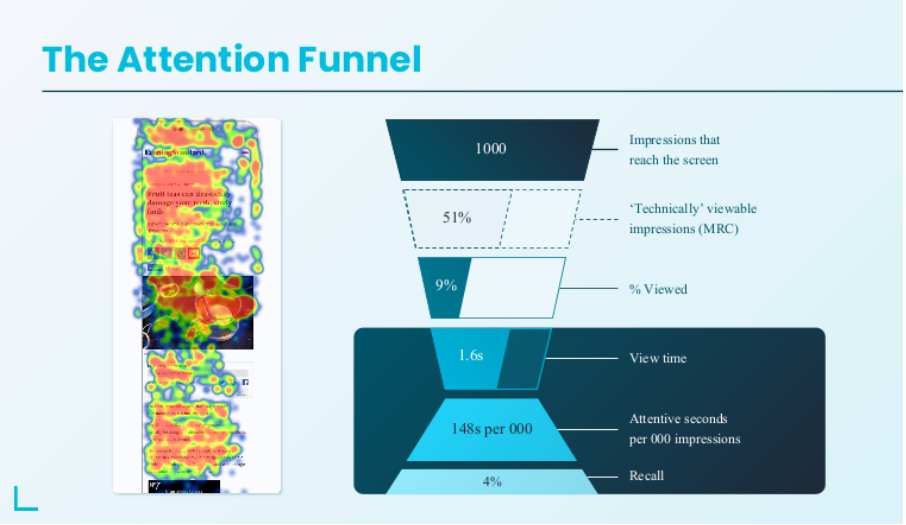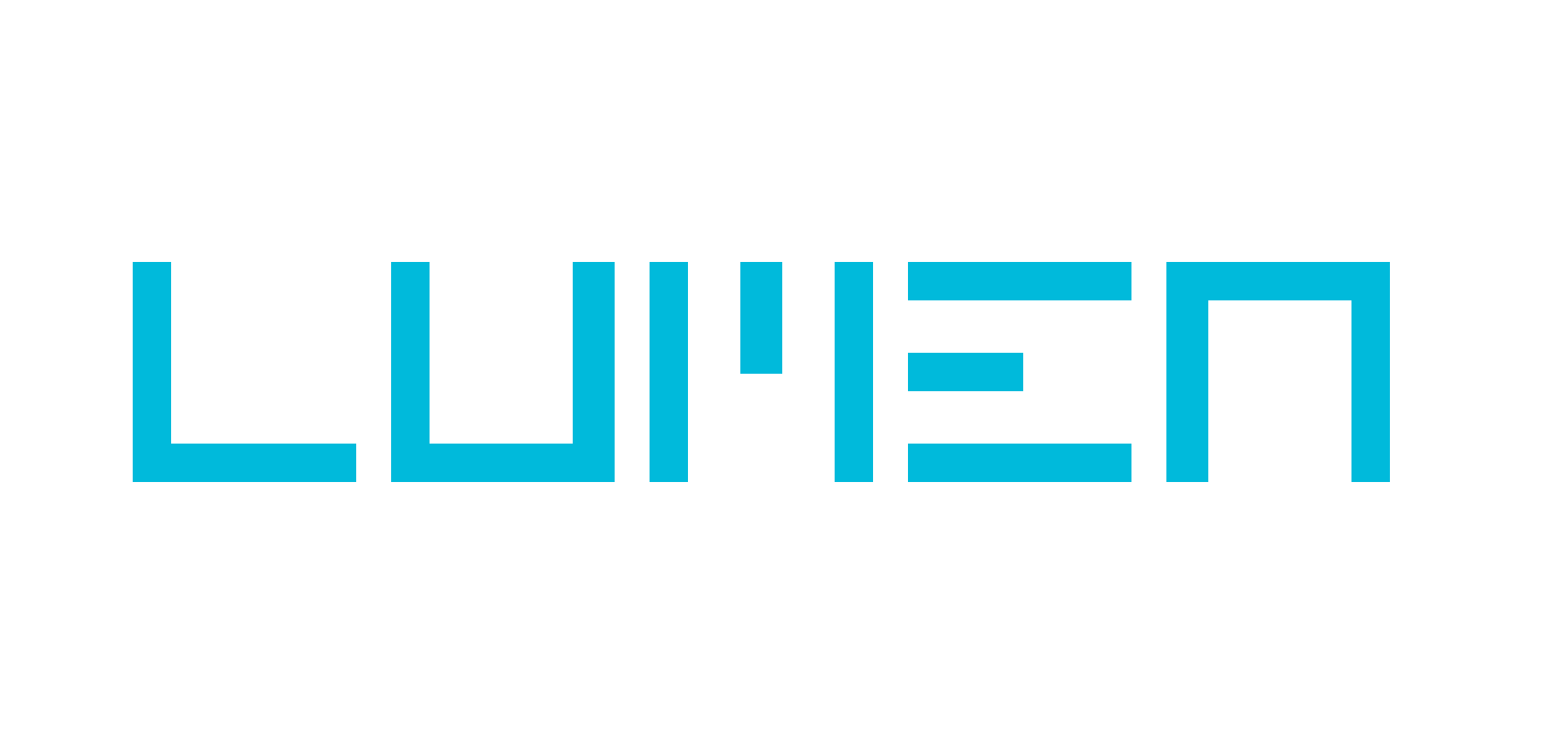The average consumer today moves fast, scrolling between apps, social channels, and websites all within just a few seconds. A lot of them time, they’re switching devices, too – or using them at the same time. Ad campaigns, no matter how good, have a hard time keeping up: only one in five consumers remembers a brand after seeing an ad. That’s not surprising: our attention data at Lumen consistently shows that only 30% of viewable ads are actually seen. The budget for the 70% of unseen ads is wasted.
To get in front of audiences, advertisers often optimize for viewability, but viewability doesn’t guarantee attention from the audience – it just means that your ads are delivered to the website. There’s no way to know if a “viewable” ad will actually get noticed. But what if you could optimize your ad campaigns based on view time, rather than viewability?
This is where attention technology companies are helping advertisers win the attention economy. By optimizing media for human behavior and how consumers really see ads, companies can drive better outcomes across the funnel, from brand lift and ad efficiency to return on ad spend. Attention is a human-first metric that prioritizes the relationship between the consumer and the ad, not the platform and the ad.
Here’s how attention technology measures attention, analyzes behavior, and optimizes ad campaigns for the attention economy:
How Attention Technology Works
There are three primary datasets attention technology companies use to measure attention: biometric, psychographic, and proxy.
- Biometric data measures how we physically react when we pay attention. In the attention technology industry, the primary way to measure biometric data is by eye-tracking technology created with hardware and software solutions.
- Psychographic data measures consumer sentiment with qualitative research that takes place before, during, and/or after the ad experience. In measuring key performance indicators (KPI) of attention technology such as brand lift and brand recall with attention-first metrics, psychographics validate the full impact of the campaign.
- Proxy data measures virtual signals that indicate attention such as computer vision, camera movement, mouse activity, and scroll speed.
To deliver the best results, attention technology companies should combine all three attention datasets. At Lumen, we believe that everything should start with eye-tracking technology: that’s how you can understand how ads are actually seen across channels, platforms, and devices.
We optimize for attention based on:
- Biometric data from fully consented, opt-in eye-tracking panels enabled by webcam software for desktop and mobile
- Psychographic data from surveys validating brand recall, purchase intent, and more
- Proxy data like scroll speed, ad density, impressions, view percentage, view time
With all this data working together, we create predictive models that drive attention-first ad campaigns.
The Attention Funnel

A traditional customer journey is broken out into three stages: awareness, consideration, and conversion. Attention technology focuses on the visual journey as consumers pause, notice, and engage with content. We call this “the attention funnel.”
The attention funnel is measured by six key metrics:
- Impressions: The number of times an ad is served/delivered.
- Technically Viewable Impressions: The number of ads rendered on-site.
- % Viewed: The percent of rendered ads seen by consumers.
- View Time: The number of attentive seconds consumers spend on an ad.
- Attention seconds per 1000 impressions: The number of attentive seconds divided by total impressions.
- Recall: Percentage of consumers who remember an ad after paying attention
Attention technology can integrate attention values across every phase of your media planning, including pre and post-bidding, to help build new media mixes.
How to Measure and Optimize an Attention-First Campaign
Attention technology companies help inform performance across the campaign based on attention by two key values:
Attention per 1000 impressions (APM) measures the total attention in seconds that a group of impressions received per 1000 impressions
Attentive cost per 1000 impressions (aCPM) is based on APM and CPM and calculates your cost per attentive seconds divided by total impressions
When you integrate attention as a value across your ad stack, it’s possible to measure campaigns by:
- Overall Platform Analysis: Performance based on APM, View Rate and View Time
- Campaign Analysis: Attention vs. Viewability
- Impressions Analysis: Impression distribution by View %, View Time, and APM Tier across device types
- Driver Analysis: Performance across domain mix, format mix, and device mix compared to attention benchmarks
- Device & Ad Format Analysis: Attention vs. Viewability
- Performance Analysis: Attention (APM) vs. CTR and Conversions
- Campaign Cost and Performance Analysis: Performance across aCPM and a comparison between performance metrics and attention scores
- Domain Cost Analysis: View of aCPM and the attention difference against top domains bought across campaigns
- Walled Garden Analysis: Attention by format and tactic within walled gardens such as YouTube, Facebook, Instagram, Tik-Tok, and other social channels
Building for the Attention Economy
Attention-first campaigns offer a new view of how advertising connects with audiences – and what actually drives them to pay attention and take action after being exposed to an ad. With a new approach to measurement and optimization, attention technology gives advertisers the opportunity to analyze what’s working, from ad creative and historic performance to ad formats and domains, based on human behavior, not just technical signals.










